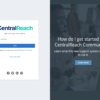Nonprofit organizations depend on visibility to engage donors, volunteers, and supporters. Given that digital platforms provide affordable methods to connect with the appropriate audience, online advertising has evolved into a crucial instrument for groups aiming to enhance their influence. Nevertheless, due to their restricted budgets and resources, nonprofits need to select their advertising approaches carefully.
1. Google Ad Grants: Free Advertising for Nonprofits
Google Ad Grants provide eligible nonprofits with up to $10,000 per month in free Google Ads. This program allows organizations to appear in search results when users look for related causes. To make the most of this opportunity, nonprofits should:
- Use targeted keywords that align with their mission
- Optimize landing pages for conversions
- Continuously refine ad copy to improve engagement
While the grant has restrictions, such as a $2.00 maximum bid per click, strategic keyword management and compelling ad content can still drive significant traffic.
2. Social Media Advertising: Targeting the Right Audience
Platforms like Facebook, Instagram, and LinkedIn offer advanced targeting options that allow nonprofits to reach specific demographics. Paid social media ads can be used to:
- Promote fundraising campaigns
- Recruit volunteers
- Raise awareness about initiatives
For best results, nonprofits should create engaging ad creatives, use video storytelling, and test different audience segments to determine the most effective approach. Retargeting ads can also help re-engage past visitors and encourage them to take action.
3. Programmatic Advertising: Maximizing Efficiency
Programmatic advertising automates ad placements using AI and real-time bidding. This approach helps nonprofits reach potential supporters across various websites and apps. By leveraging data-driven insights, organizations can:
- Target users based on interests and behaviors
- Optimize ad spend for maximum reach
- Track engagement and adjust campaigns accordingly
Although programmatic advertising requires expertise, working with an experienced agency can help nonprofits navigate the process effectively.
4. PPC Advertising: A Strategic Investment
Pay-per-click (PPC) advertising is an effective way for nonprofits to drive traffic and conversions quickly. Unlike Google Ad Grants, paid PPC campaigns offer more flexibility in targeting and bidding strategies. Investing in PPC services for charities & non profits can help organizations optimize their ad spend and improve performance. By carefully selecting keywords and crafting compelling ad copy, nonprofits can achieve better visibility and engagement.
5. Video Advertising: Engaging and Impactful
Video content is one of the most effective ways to capture attention and convey a nonprofit’s mission. Platforms like YouTube, TikTok, and Facebook support video ads that can:
- Showcase success stories
- Inspire donations
- Educate audiences about a cause
Short, emotionally compelling videos tend to perform best. Nonprofits should ensure their message is clear and includes a strong call to action.
6. Email Retargeting: Converting Interest into Action
Email retargeting allows nonprofits to re-engage users who have previously interacted with their website or ads. By integrating retargeting with online advertising, organizations can send personalized messages that encourage:
- Donation completion
- Event registration
- Volunteer sign-ups
A well-timed email combined with strategic ad placements can significantly boost conversions.
Conclusion
Online advertising provides nonprofits with powerful tools to expand their reach and drive meaningful action. By leveraging Google Ad Grants, social media ads, programmatic advertising, PPC campaigns, video marketing, and retargeting, organizations can maximize their impact while staying within budget. The key is continuously testing, optimizing, and refining strategies to ensure the best results.









